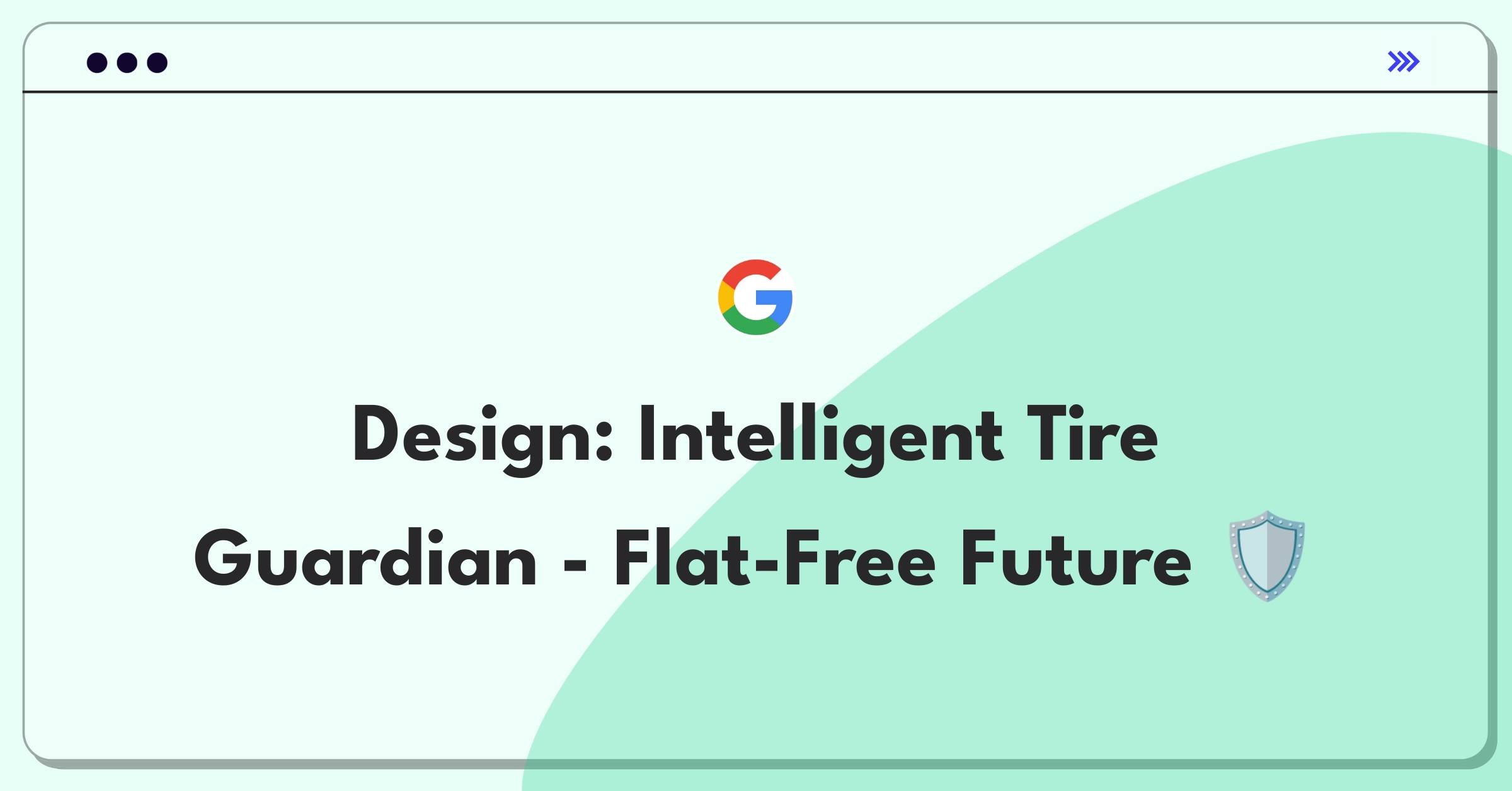Designing a Flat Tire Prevention System for Vehicles: A Technical Product Approach
To prevent flat tires in cars, we'll design an integrated system combining real-time tire pressure monitoring, predictive maintenance algorithms, and self-sealing tire technology. This solution will leverage IoT sensors, machine learning for predictive analytics, and advanced materials science to significantly reduce the occurrence of flat tires.
Introduction
The challenge of preventing flat tires in cars presents a unique opportunity to leverage cutting-edge technology in solving a persistent automotive problem. This issue not only affects driver safety and convenience but also has broader implications for vehicle efficiency and maintenance costs. Our goal is to develop a comprehensive, scalable solution that seamlessly integrates with existing vehicle systems while providing robust protection against flat tires.
In addressing this challenge, I'll follow these key steps:
- Clarify technical requirements and constraints
- Analyze the current state and technical challenges
- Propose technical solutions
- Outline an implementation roadmap
- Define metrics and monitoring strategies
- Assess and mitigate risks
- Present a long-term technical strategy
Tip
Throughout this process, we'll ensure our technical solution aligns closely with business objectives, balancing innovation with practicality and cost-effectiveness.
Step 1
Clarify the Technical Requirements (3-4 minutes)
To ensure we're building on a solid foundation, I'd like to clarify some key technical aspects:
Why it matters: Determines the level of integration possible and the potential for retrofitting older vehicles. Expected answer: Focus on new vehicles with advanced electronic systems. Impact on approach: We can leverage existing vehicle networks and sensors, potentially reducing implementation complexity."
Why it matters: Affects the scope of our development efforts and potential partnerships. Expected answer: Open to both in-house development and strategic partnerships. Impact on approach: We may need to design a flexible system that can work with various tire technologies."
Why it matters: Influences the feasibility of advanced analytics and real-time response systems. Expected answer: Modern vehicles have significant on-board computing capabilities and often include cellular connectivity. Impact on approach: We can design more sophisticated predictive algorithms and consider cloud-based analytics for deeper insights."
Why it matters: Ensures compliance and may influence our technical approach. Expected answer: Need to comply with NHTSA standards and potentially international regulations. Impact on approach: We'll need to incorporate compliance checks into our development process and possibly engage with regulatory bodies."
Based on these clarifications, I'll proceed with the following assumptions:
- We're targeting modern vehicles with advanced electronic systems.
- We have flexibility in developing both hardware and software solutions.
- Target vehicles have sufficient on-board computing power and connectivity.
- We need to comply with NHTSA standards and potentially international regulations.
Subscribe to access the full answer
Monthly Plan
The perfect plan for PMs who are in the final leg of their interview preparation
$99 /month
- Access to 8,000+ PM Questions
- 10 AI resume reviews credits
- Access to company guides
- Basic email support
- Access to community Q&A
Yearly Plan
The ultimate plan for aspiring PMs, SPMs and those preparing for big-tech
$99 $33 /month
- Everything in monthly plan
- Priority queue for AI resume review
- Monthly/Weekly newsletters
- Access to premium features
- Priority response to requested question


.png)